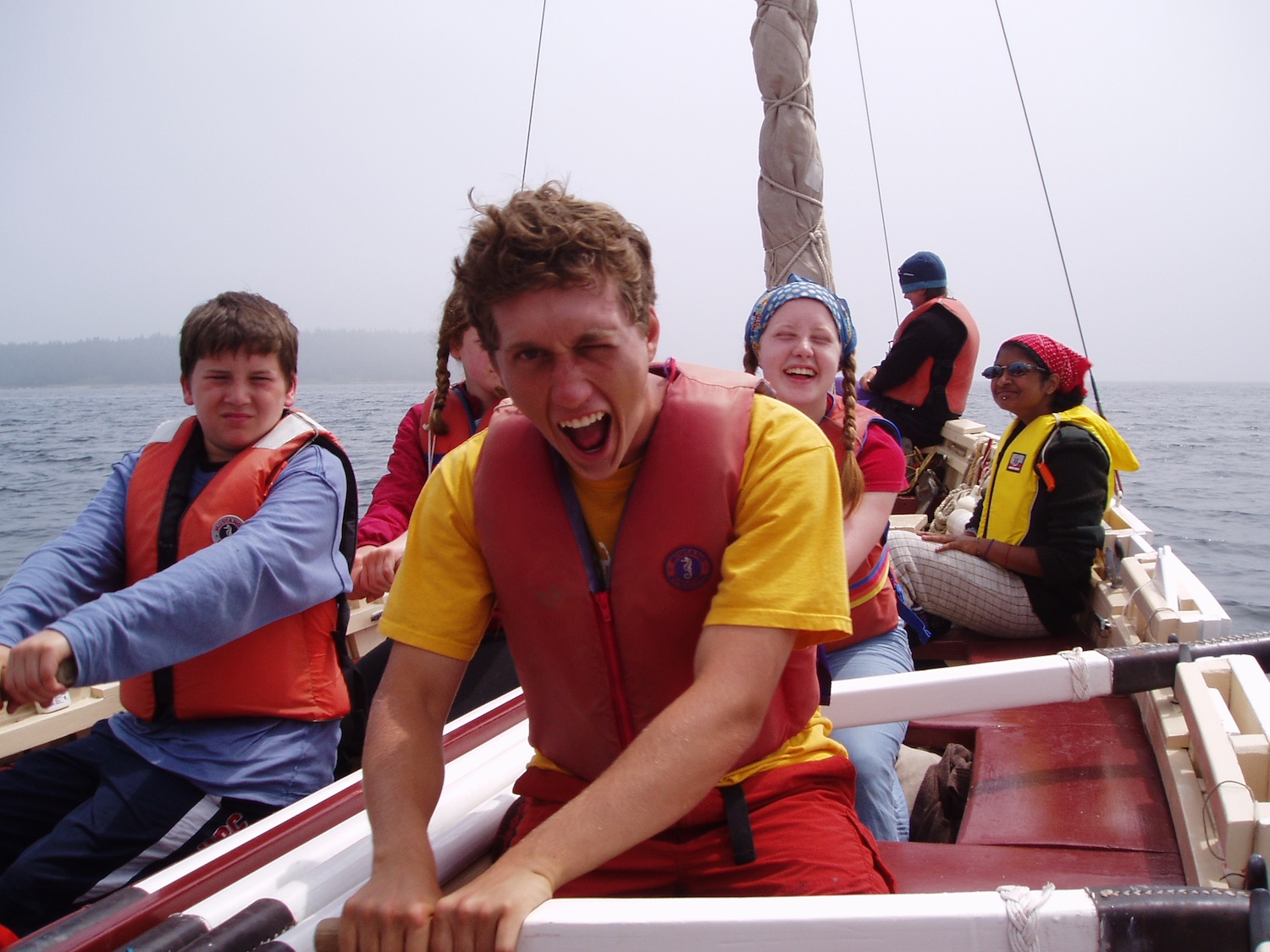
For example, in a traditional sailing boat, when there’s no wind, we row. So at the Nova Scotia Sea School our thirty foot open boats carry eight oars for rowing. When we need to make progress on a calm day, or when we need to keep ourselves from drifting onto the rocks, we row. At the end of an expedition, if there’s no wind, we may have to row all night to get back to our base in time
The oars we carry are each thirteen feet long, heavy and awkward, and many of our trainees have never been in a boat before, let alone handled traditional oars.
So let’s say you’re the captain. How do you get a crew of inexperienced people to row together in sync, with power, for a long time, without the boat looking like a drunken spider?
You can try setting a rhythm by calling out, “Stroke! Stroke! Stroke!”. But it isn’t really enough to keep people’s attention, and you just get hoarse and tired.
You can try leading the rowers in a sea chantey to keep the rhythm. They probably don’t know any chanties, but you can teach them one, or they can sing “Row, Row, Row Your Boat,” which everyone knows. This can help, but what often happens is that people get so engaged by the singing that they lose track of the rowing, and the drunken spider returns.
We’ve discovered, in the past 20 years of leading expeditions, that the best way to synchronize the rowers is for you to say, “Okay, rowers, close your eyes, and listen for the sound of one splash as eight oars hit the water together.” This is a mystery, but it’s true. Rowers row better together with their eyes closed, in silence, than with any kind of artificial incentive from you.
Sometimes our engagement strategies can be very effective at engaging people . . . in our engagement strategies. Not in what matters. The sea chantey is fun and builds community, everyone’s delightedly engaged, but it undermines the attentiveness needed to keep the boat moving.
The best engagement strategy is to create the conditions that allow people to fully engage themselves, and then get out of the way. When the rowers row in silence, with eyes closed, they learn to listen to each other, and they row beautifully, powerfully, with a deep sense of unity. Someone may mess up and get out of sync, but then they stop a moment, listen, and recover. They become self-correcting. They can’t get more engaged than that, because they are engaged in what matters.
If a friend sent you this article and you’d like to sign up to receive more, twice-a-month, click here to sign up.
Or if you would like to read Crane’s book, click here for the free ebook or audiobook download.







